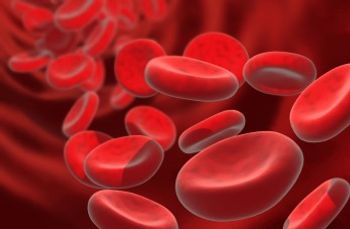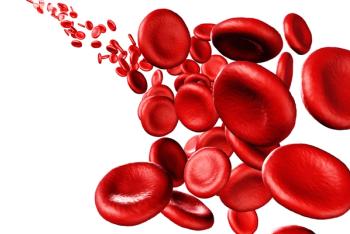
- Oncology Vol 28 No 1S
- Volume 28
- Issue 1S
(P153) Hypofractionated Radiation for Early Breast Cancer: What Are Reasonable Lung Dose Constraints in the Setting of 3-Dimensional Treatment Planning?
Our purpose is to review a series of hypofractionated plans to report our ipsilateral lung dose-volumes and corresponding lung included in the field at the central plane.
Michael Dominello, DO, Shauna Campbell, BS, Isaac Kaufman, MD, Amy Collins, BS, Erin McSpadden, MPH, Neha Amin, MD; Barbara Ann Karmanos Cancer Center, Detroit Medical Center, Wayne State University
Background: Hypofractionated radiation therapy (HFRT) is being increasingly utilized as a component of breast-conserving therapy for early-stage breast cancer. In the phase III European and Canadian trials investigating the use of HFRT, up to 3 cm of lung measured at the central plane was permitted in the treatment field and resulted in acceptable radiation pneumonitis rates of less than 1%. While these landmark HFRT studies did not report dose-volumes for organs at risk (OARs), an open Radiation Therapy Oncology Group (RTOG) protocol, RTOG 1005, offers ideal and acceptable dose-volume constraints for the ipsilateral lung. These constraints are routinely used at our institution while treatment planning for a hypofractionated course off protocol. Our purpose is to review a series of hypofractionated plans to report our ipsilateral lung dose-volumes and corresponding lung included in the field at the central plane.
Methods: Ten consecutive radiation plans used in the treatment of early-stage (American Joint Committee on Cancer [AJCC] 7th group stage I, II), right-sided breast cancer were reviewed. All patients included received whole-breast treatment to a total dose of 42.56 Gy in 2.66-Gy fractions with a 10-Gy sequential lumpectomy cavity boost. All patients were planned utilizing forward-planned field-in-field intensity modulation. Patients with left-sided breast cancer and patients treated in the prone position were excluded to most conservatively estimate lung dose-volumes. Percent of the ipsilateral lung receiving 20 Gy or more (V20), V10, and V5 were recorded. Ipsilateral lung included in the field at the central plane was recorded.
Results: All 10 plans that were reviewed met the acceptable target volume coverage recommendations and ipsilateral lung dose constraints as described by RTOG (V20 ≤ 20%, V10 ≤ 40%, and V5 ≤ 55%). Mean ipsilateral lung V20 was 9.7% (median 8.9%; range: 2.4%–19%). Mean ipsilateral lung V10 was 13.8% (median 13.0%; range: 4.7%–22.8%). Mean ipsilateral lung V5 was 23.7% (median 21.7%; range: 10.9%–31.6%). Mean ipsilateral lung included in the field at the central plane was 1.2 cm (median 1.1 cm; range: 0.1–2.7 cm).
Conclusions: The lung dose constraints as outlined in RTOG 1005 are achievable while still delivering adequate dose to the target volume. Given that all patients in our series had < 3 cm of lung included in the field at the central plane with a mean of just 1.2 cm, it is likely that the patients enrolled in the randomized controlled trials examining HFRT received similar or perhaps higher ipsilateral lung V20, V10, and V5 with acceptable pneumonitis rates. Until the results of RTOG 1005 are available, these data support the use of the RTOG-proposed dose-volumes-lung V20 ≤ 20%, V10 ≤ 40%, and V5 ≤ 55%-as conservative dose restraints during 3-dimensional treatment planning for HFRT.
Articles in this issue
Newsletter
Stay up to date on recent advances in the multidisciplinary approach to cancer.


















































































